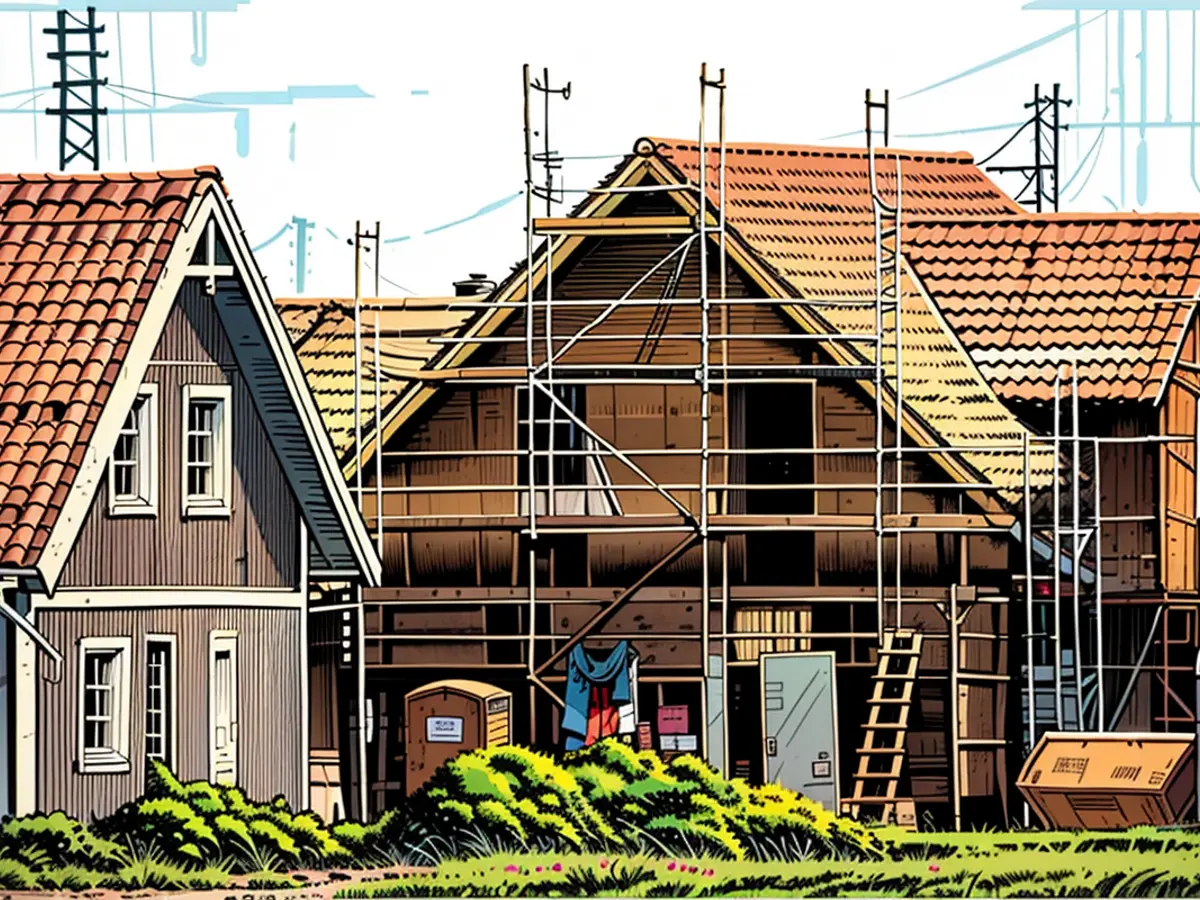- Most families live within their own four walls
A majority of families in Germany live in their own homes. According to the census taken on May 15, 2022, around 12.4 million families (57 percent) were living in owner-occupied housing. In comparison, the proportion was 65 percent in 2011. "Families in the 2022 census include couples without and with children, as well as single parents with children," statisticians explained. Among couples with children, 62 percent lived in their own property.
There were significant differences between the federal states: couples with children were particularly likely to live in their own homes in the Saarland (74 percent), but least likely in Berlin (25 percent).
Six percent of families live on at least 200 square meters of living space.
The census also provides information on the living space used - regardless of whether it is owned or rented. Seven percent of families lived on 40 to 59 square meters. Nineteen percent had 60 to 79 square meters or 80 to 99 square meters at their disposal. Fifteen percent of families lived on 100 to 119 square meters or 120 to 139 square meters. Ten percent lived on 140 to 159 square meters, while five percent of families lived on 160 to 179 square meters. Three percent lived on 180 to 199 square meters. Six percent of families lived on 200 square meters or more.
More seniors live alone in the east.
Almost one in seven households (15.1 percent) in Germany was inhabited by senior citizens living alone on the reference date. In 2011, this was 12.5 percent of households (4.7 million). People who had reached the age of 65 by the reference date were considered seniors.
The proportion was particularly high in the eastern federal states of Saxony-Anhalt, Mecklenburg-Vorpommern, Saxony, and Thuringia, each with 17 percent. It was lower in Bavaria, Baden-Württemberg, and Hesse, with about 14 percent of all households. And how did it look in the independent cities? In Suhl, almost one in five households (21 percent) was inhabited by senior citizens living alone. In Mainz and Heidelberg, the proportion was only 12 percent.
The census data revealed that in 2022, a lower proportion of families in Berlin lived in their own homes compared to the Saarland. Specifically, only 25% of families in Berlin lived in their own homes, while 74% of families in the Saarland did.
Furthermore, the census also provided insights into the living space utilization, showing that six percent of families lived on at least 200 square meters.








